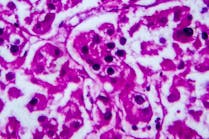Miniaturized chips containing live, human kidney cells are on board the scheduled June 3 Space X cargo supply Mission 22 to the International Space Station. Inside the 3D chips, the cells are kept alive in a tiny system that delivers fluids dynamically, according to a news release from the University of Washington. These tissue chips model responses that take place along the hard-working tubules of kidneys.
The flight carrying these tissue chips marks the second voyage of a space research program from the University of Washington School of Pharmacy, the Kidney Research Institute, and UW Medicine. Their first set of kidney tissue chips launched to the Space Station May 4, 2019, with a return flight splashdown and recovery June 10, 2019.
The scientists are using the microgravity of space as an unusual environment, not available on Earth, to study the genesis of certain kidney diseases and related disorders, and how kidneys age.
Astronauts on long assignments in space can become prone to kidney stones, altered urine chemistry, and rapid aging of their kidney cells. As missions to return to the Moon are planned, and a journey to Mars is considered, pre- and in-flight protections against kidney disease, and treatments that can be administered en route will be vital.
But the research has public importance far beyond space flight. Sending kidney tissue chips to space is a way to learn, in a speeded-up time frame, about the genesis of medical conditions, such as protein in the urine, bone loss, and kidney stones.
The scientific results of these space experiments could suggest new ways to prevent and treat these disorders in people who have never ventured into orbit. Kidney diseases — and some life-saving treatments like dialysis — can be debilitating. Better therapeutic options are needed for the millions of people who are, or will be, affected by the kidney diseases being studied through this space research program.
This time, the researchers will be sending 24 of the credit-card size chips, which will contain fluid micro chambers lined with human-derived kidney cells from six donors, to explore why kidney stones form.





